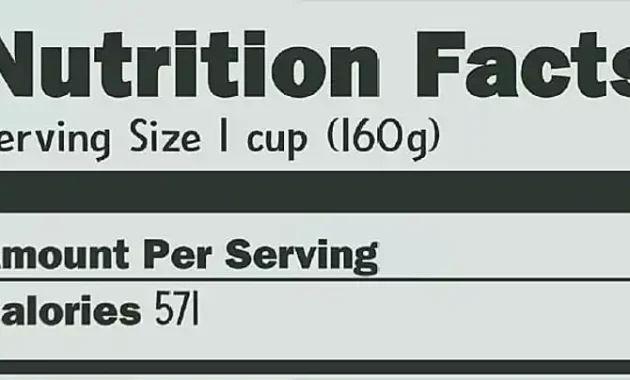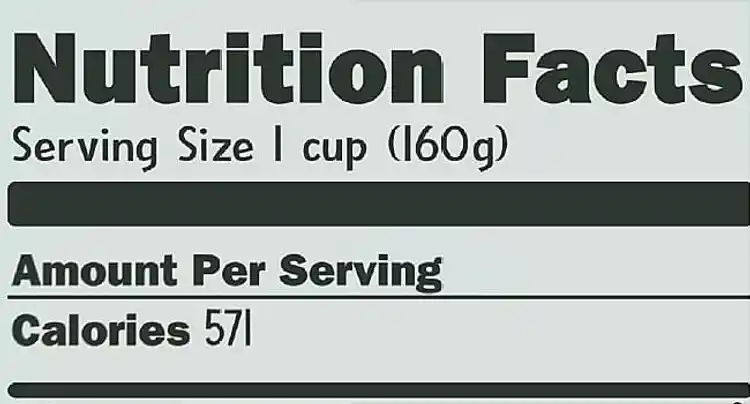
Decoding Diabetes: A Guide to Understanding Food Labels and Nutrition Facts
Navigating the grocery store can be a daunting task, even for the most seasoned shoppers. But for individuals managing diabetes, this simple chore transforms into a critical exercise in health management. Understanding how to decipher food labels and nutrition facts is not just beneficial; it’s essential for maintaining stable blood sugar levels and preventing complications. This article provides a comprehensive guide to help you understand diabetes labels and nutrition facts, empowering you to make informed food choices and take control of your health.
The prevalence of diabetes continues to rise globally, making this information crucial for a significant portion of the population. According to the Centers for Disease Control and Prevention (CDC), millions of Americans are living with diabetes, and millions more are prediabetic. This underscores the urgent need for accessible and accurate information about diabetes management, particularly regarding dietary choices. Understanding food labels is a fundamental skill in this process.
The Anatomy of a Food Label: A Deep Dive
The food label is a treasure trove of information, but it can often feel like a cryptic code. Familiarizing yourself with the different components is the first step toward becoming a label-reading expert. Let’s break down the key elements:
- Serving Size: This is the cornerstone of the entire label. All the nutritional information listed refers to the specified serving size. Pay close attention to this, as it’s easy to miscalculate your intake if you consume more than one serving.
- Calories: Calories indicate the energy content of a serving. While important, they shouldn’t be the sole determinant of a food’s healthfulness.
- Nutrients: The label provides information on various nutrients, including total fat, saturated fat, trans fat, cholesterol, sodium, total carbohydrates, dietary fiber, total sugars, and added sugars. These are all crucial considerations for people with diabetes.
- Percent Daily Values (%DV): This column provides context for the nutritional information, indicating how much a nutrient in a serving contributes to a daily diet. Aim for lower percentages of saturated fat, trans fat, sodium, and added sugars, and higher percentages of fiber.
- Ingredients List: Listed in descending order by weight, the ingredients list offers valuable insights into the composition of a product. This section can help you identify hidden sources of sugar and unhealthy fats.
Key Nutrients to Watch for in Diabetes Management
Certain nutrients have a more significant impact on blood sugar levels and overall health for individuals with diabetes. Understanding these nutrients and their effects is critical.
- Carbohydrates: Carbohydrates have the most direct impact on blood sugar. The total carbohydrate count includes starches, sugars, and fiber. It’s essential to carefully monitor carbohydrate intake and distribute it throughout the day.
- Fiber: Dietary fiber, particularly soluble fiber, can help slow down the absorption of sugar into the bloodstream, promoting better blood sugar control. Look for foods with a high fiber content.
- Added Sugars: These are sugars that are added during food processing. They offer little nutritional value and can contribute to blood sugar spikes. The label now clearly indicates the amount of added sugars.
- Fats: While all fats are not created equal, it is important to be mindful of fat consumption. Saturated and trans fats should be limited, while healthy fats (like those found in avocados and nuts) can be included in moderation.
- Sodium: Excessive sodium intake can contribute to high blood pressure, a common comorbidity with diabetes. Pay attention to the sodium content, especially in processed foods.
Deciphering the Carbohydrate Count: A Diabetes Labeling Priority
For individuals with diabetes, the carbohydrate count is often the most critical piece of information on a food label. It directly impacts blood sugar levels. Here’s how to make sense of it:
- Total Carbohydrates: This is the sum of all carbohydrates in a serving, including fiber and sugars.
- Dietary Fiber: Fiber doesn’t significantly raise blood sugar, so it’s subtracted from the total carbohydrates to calculate the net carbs.
- Sugars: This includes both naturally occurring sugars and added sugars.
- Net Carbs: Some people with diabetes use the “net carbs” calculation to estimate the impact of a food on blood sugar. This is calculated by subtracting the fiber from the total carbohydrates. (Total Carbohydrates – Dietary Fiber = Net Carbs).
Understanding the carbohydrate count is essential for meal planning and insulin dosing (if applicable). Work with a registered dietitian or certified diabetes educator to determine your ideal carbohydrate intake per meal and snack.
Reading Ingredient Lists: Unmasking Hidden Sugars
The ingredient list is a crucial tool for identifying hidden sugars and unhealthy ingredients. Sugar can be disguised under various names. Be vigilant and watch out for these:
- Corn syrup
- High-fructose corn syrup
- Sucrose
- Glucose
- Fructose
- Maltose
- Dextrose
- Syrups (e.g., maple syrup, brown rice syrup)
- Words ending in “-ose”
The order of ingredients matters. Ingredients are listed in descending order by weight. If sugar is near the beginning of the list, the food likely contains a significant amount of added sugar. Similarly, be mindful of unhealthy fats like saturated and trans fats.
Practical Tips for Label Reading: Putting Knowledge into Action
Now that you understand the components of a food label, here are some practical tips for applying this knowledge in your daily life:
- Compare Products: Before making a purchase, compare the nutrition facts of different brands and products. Choose the option with the lowest amount of added sugars, saturated fats, and sodium, and the highest amount of fiber.
- Plan Your Meals: Use food labels to plan your meals and snacks, ensuring that you are consuming a balanced intake of carbohydrates, proteins, and fats.
- Track Your Intake: Consider using a food diary or a tracking app to monitor your food intake and blood sugar levels. This can help you identify patterns and make adjustments to your diet.
- Focus on Whole Foods: Whole, unprocessed foods like fruits, vegetables, lean proteins, and whole grains often have minimal or no labels, as they are naturally healthy.
- Read the Serving Size Carefully: Always check the serving size and calculate the nutritional content accordingly.
- Beware of Health Claims: Be cautious of health claims on packaging. They can be misleading. Always read the nutrition facts panel to verify the information.
Diabetes and the Importance of Informed Food Choices
The connection between diet and diabetes management is undeniable. Understanding food labels is a critical skill for anyone living with diabetes. It allows individuals to make informed choices about what they eat, which significantly impacts their blood sugar levels, weight, and overall health. By understanding diabetes labels and nutrition facts, individuals can take control of their health and improve their quality of life.
Managing diabetes is a multifaceted challenge, requiring a holistic approach that includes medication, exercise, and a carefully planned diet. Understanding diabetes labels and nutrition facts is a cornerstone of this approach. It empowers individuals to make informed decisions about what they eat, helping them to achieve and maintain optimal blood sugar control. This, in turn, reduces the risk of long-term complications associated with diabetes, such as heart disease, kidney disease, and nerve damage. The ability to read and interpret food labels is not just about avoiding certain foods; it’s about making choices that support overall health and well-being.
The ability to understand diabetes labels and nutrition facts is an ongoing process. It requires continuous learning and adaptation as food products evolve and new information emerges. Consulting with healthcare professionals, such as a registered dietitian or certified diabetes educator, can provide personalized guidance and support. These experts can help tailor dietary plans to individual needs and preferences, ensuring that individuals with diabetes have the knowledge and skills they need to thrive.
In conclusion, the ability to understand diabetes labels and nutrition facts is a vital skill for anyone managing diabetes. It is an essential tool for making informed food choices and achieving optimal blood sugar control. By mastering the art of label reading, individuals with diabetes can take control of their health and live a full and active life. This knowledge is more than just information; it is empowerment. It allows people with diabetes to make informed choices that improve their health and well-being. Understanding diabetes labels and nutrition facts is a journey, not a destination. Continuous learning and adaptation are key to success. Take the time to learn about food labels. Your health will thank you.
[See also: Related Article Titles]

